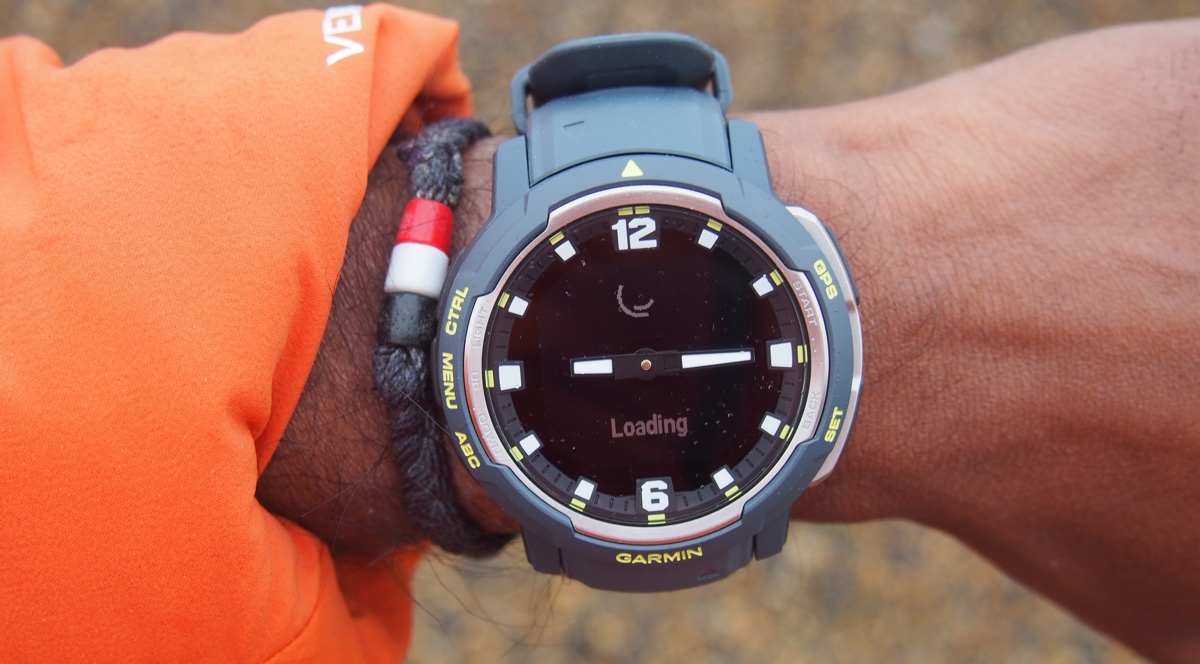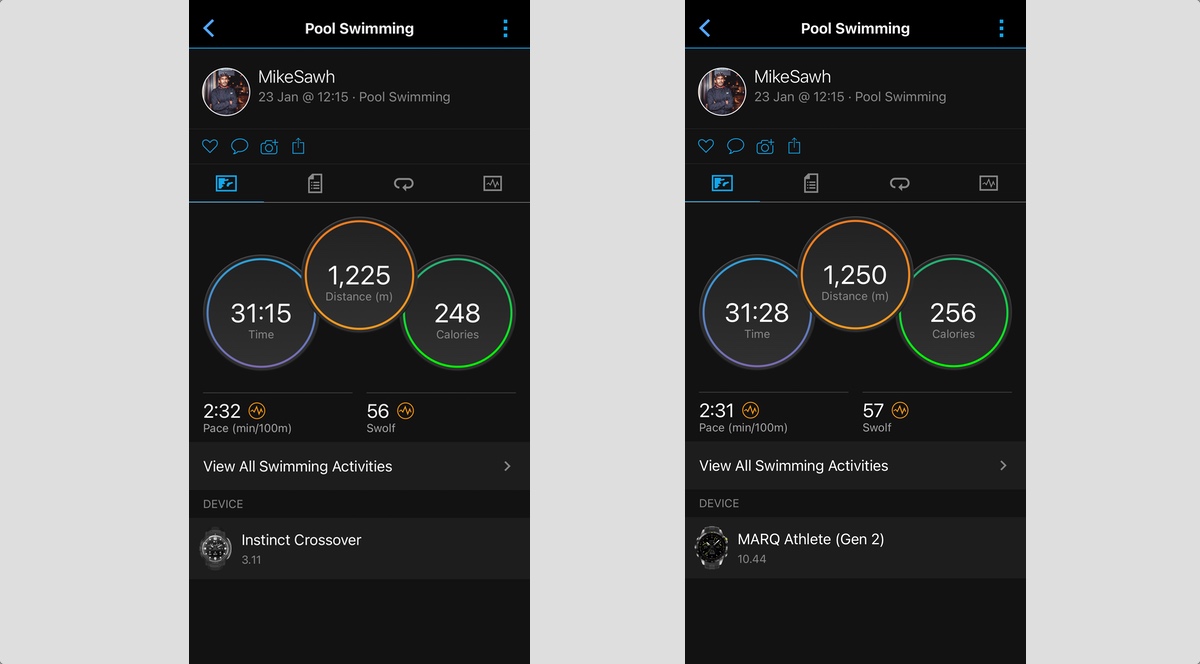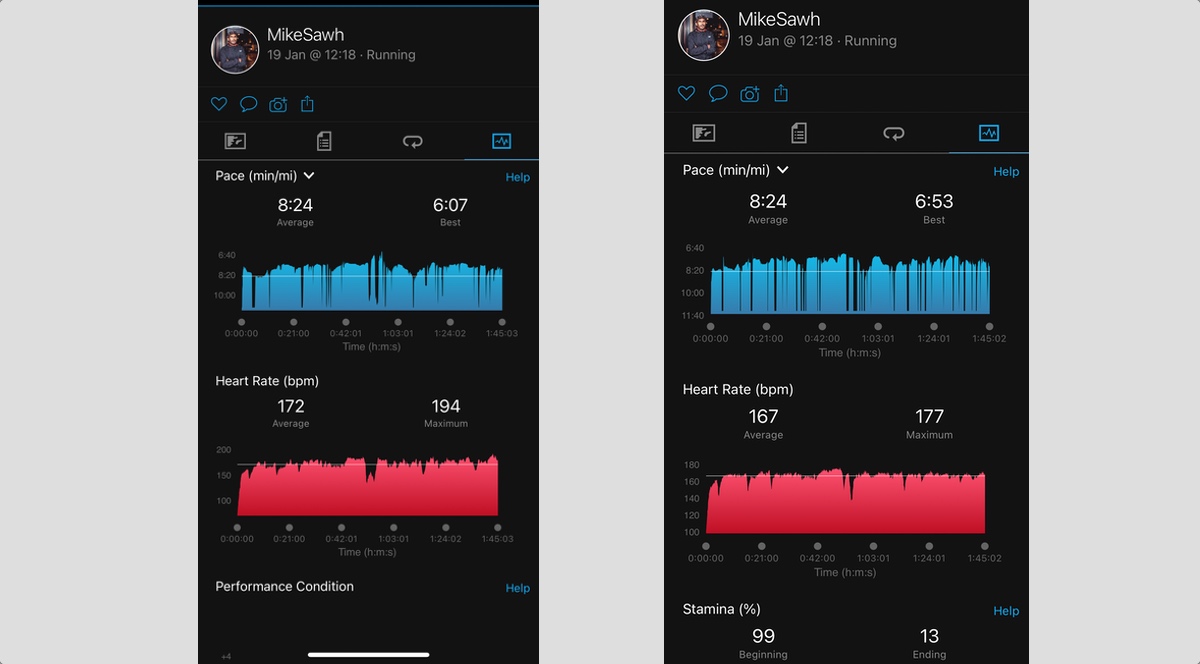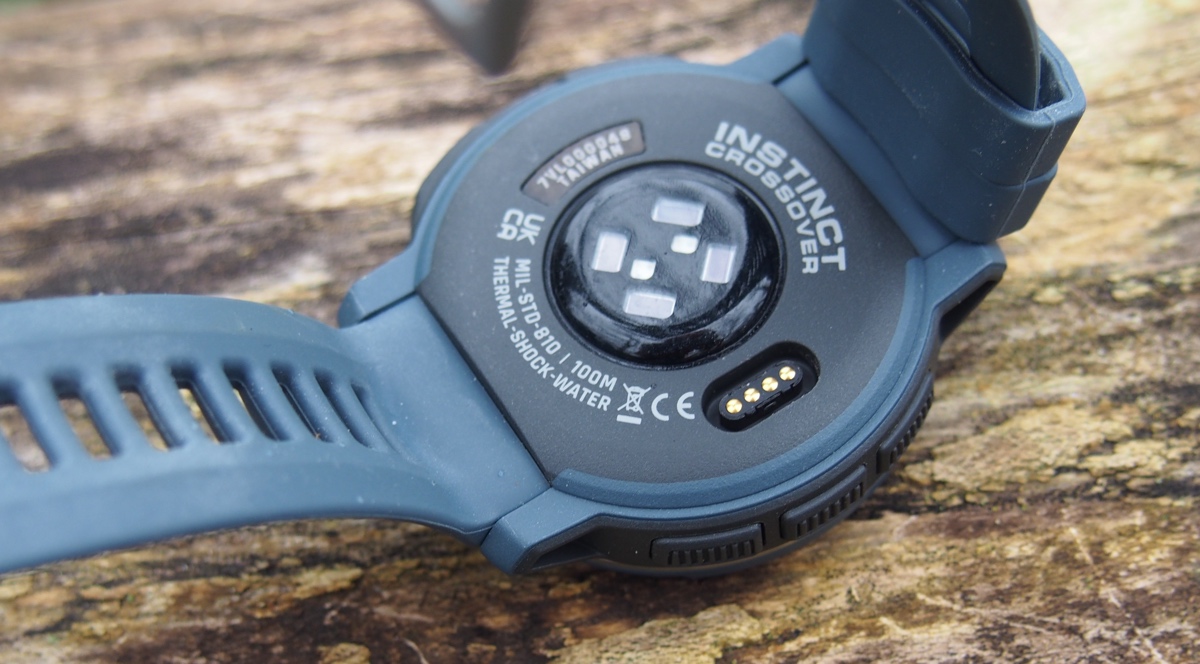
- Comfortable to wear 24/7
- Good collection of sports tracking features
- Solid battery performance
- The analog hands get in the way
- Slow-responding workout button
- Big price jump on the Instinct 2
Come on, own up. Who asked for this? The Garmin Instinct Crossover is a smartwatch aimed at people who love to track a long hike, but also the simplicity and longevity of a hybrid smartwatch.
Garmin has taken its popular Instinct series watch and added a set of analog hands on top of the same digital display used on Instinct 2.
This isn’t the first time Garmin has offered smart and analog timekeeping in one watch. Its successful Vivomove series has shown how the two can live together harmoniously.
So has it managed to do the same on the Instinct Crossover? Here’s our verdict.
> Go big or go home: Garmin Instinct 2X review
A different analog approach
Wareable
As we’ve mentioned, this isn’t the first time Garmin has dropped analog hands onto one of its watches.
On its Vivomove series, it added analog hands to a watch face that included a smaller OLED display on the bottom half of the watch faces that only emerged when you interacted with it or something like a notification came through from your phone.
On the Instinct Crossover, it’s putting that analog on top of an entire screen that’s displaying your stats and watch faces.
Those analog hands will move out of the way, either to the 9.15 AM/PM or 6 AM/PM position to let you see menu screens, workout stats, or your streams of Glances (widgets).
Those hands have a luminescent finish to compliment the hour and minute markers to help make them easier to see at night, but you do have a backlight here as well to help on that front.
Wareable
While the analog approach on the Vivomove works surprisingly well, the same can’t be said about the Crossover.
There were too many occasions where the hands felt in the way, even if they were dynamically moved to not be.
The first obvious example is the main watch screen. If you put a nice watch face on the main transflective screen, the hands sit on it in a cluttered way.
Wareable
When we used the navigation features you’re essentially sacrificing the useful sub-display on the Instinct 2 for hands that don’t help point you in the right direction.
It was also a problem when it came to doing something as simple as selecting the correct watch mode. Before hitting a running track session, we’d thought we’d selected the right mode, but the way the screen is split didn't help matters, and we ended up incorrectly logging the workout as a pool swim.
Wareable
If you’ve got notifications popping up at the same time you’re using the workout tracking or navigation, it can quickly feel like a messy screen to look at.
The combination of the same-sized transflective display used on the Instinct 2 with those extra analog hands simply doesn’t create as intuitive an experience as Garmin has done on the Vivomove.
If the idea was to make something stylish and functional, then this isn’t a great example of that.
Some odd performance quirks
Wareable
What doesn’t help the Crossover either is that it has some odd performance moments here. Garmin rarely dishes out processor specs for its watches but has doubled up the memory from Instinct 2 from 32MB to 64MB of memory.
Software performance is rarely an issue with most Garmin watches but there seem to be a few that plague the experience here.
The first is the slight delay you get when using the main workout-tracking mode. It prompts the movement of the watch hands to let you view the sports mode list, which sits above and below those hands.
On a couple of occasions pressing that button to start a workout it hasn’t started a workout. Whether it’s a slightly stiff button or a slow to react software, something doesn’t seem to be right there.
Wareable
There’s also some slowness at times when saving longer workouts. It’s fine for shorter workouts but we can’t recall it laboring to save in the same way on Instinct 2.
There are also some differences in the way the UI is presented on the Crossover that slightly irk us. If you want to view the battery percentage, you need to hold down the menu button as opposed to scrolling through the top of the Glances feed to see it.
The way the hands split the screens and widgets, in general, creates a jarring viewing experience overall and those little irksome things add up to bigger ones.
Typically solid sports tracking
Wareable
Our issues with the analog hand clouds what is a good overall tracking experience that is a lesser one with the removal of that dinky second display you get on other Instinct models.
It’s an element of the Instinct design that proved useful when in tracking or navigation mode and you lose out on it on the Instinct Crossover.
All of the same sports tracking and navigation features are here that were on Instinct 2.
Running, golf, swimming (pool and open water) and cycling are the core modes and then you’ve got outdoor profiles for the likes of hiking, climbing, skiing, and rowing.
Wareable
You’ve also got indoor activities like rowing covered here too and our indoor rows and pool swims were nicely in line with the reliable tracking we’ve experienced on other new Garmins.
It doesn’t include the excellent new multiband GPS mode Garmin has introduced on its Forerunner 255, 955, Fenix 7, and Epix watches, but it can still communicate to three big satellite systems and offer a rich array of outdoor data.
Wareable
GPS compared: Instinct Crossover (blue) and Epix 2 (red)
We used it alongside the Garmin Epix 2 and the Garmin Marq and found GPS performance on the whole pretty good. On a 12-mile run, it served up similar core data for distance tracked at an average pace, and tracked routes looked largely similar when looking a little closer.
Wareable
GPS compared: Instinct Crossover (blue) and Epix 2 (red)
Heart rate performance wasn’t fantastic, but fared better for steady-paced workouts. Like a lot of optical sensors, it threw up some suspiciously high heart rate spikes in more intense exercise time when we compared the data to Garmin’s own HRM-Pro Plus chest strap monitor.
Wareable
Exercise HR compared: Instinct Crossover (left) and Garmin HRM-Pro Plus heart rate monitor (right)
The navigation experience is the same as you get on Instinct 2. You don’t get full TOPO maps as you do on the Fenix 7, Epix, or Forerunner 955, but instead, you get the ability to follow breadcrumb trails, use features like back to the start and you can upload your routes to the watch as well.
The navigation features are simple and consist of following a straight dotted line, letting you know if you’re on course or off course.
It’s here that the standard Instinct display is missing and you can tuck away that navigation arrow letting you absorb the simple route on display and which direction you need to go.
A good serving of training metrics and analysis
Wareable
The Instinct 2 signaled a move to make this particular Garmin watch a better training companion and that hasn’t changed on the Instinct Crossover.
If you want something that will tell you what kind of run you should do or when you should ease up or you like the idea of dabbling in running power, those are things you can do here.
Features like daily suggested workouts and the recovery advisor need warming up and by that we mean it needs a good pack of your data before you start to see useful advice.
After we’d clocked a lot of slow, evenly-paced run workouts it suggested adding in some sprints. The Crossover was suggesting similar workouts to the other Garmin we'd been wearing long-term.
It’s the kind of feature that you need to be patient with, but can be useful, particularly if you’re seeking out some running guidance.
Wareable
Resting HR compared: Garmin Instinct Crossover (left) and Oura Ring 3 (right)
Seeing your VO2 Max, intensity minutes accrued or your Fitness Age can be useful windows into your current fitness level, but these heavily rely on metrics like heart rate during exercise and resting heart rate data.
We’d say the resting heart rate insights fare better than workout heart rate for accuracy, so features like Fitness Age that use those metrics are nice ways to see whether you’re in good shape.
Good but not stellar Instinct battery
Wareable
The Garmin Instinct 2 made sizable battery improvements on the original Instinct and for the Crossover, Garmin is promising the same level of battery as the 45mm version of the Instinct 2.
Breaking down the numbers, you’re getting up to 28 days in smartwatch mode, 71 days in battery-saver mode, up to 25 hours in the most accurate GPS battery mode, and 11 days in Max Battery GPS mode.
There’s also an Expedition GPS mode that’ll give you 40 days with a set of power mode settings in place to let you get the most out of the battery.
If you opt for the solar version of the Instinct Crossover (we tested the non-solar version), then 28 days of smartwatch battery becomes 70 days, which is less than the promised unlimited battery on the Instinct 2 solar.
The top GPS accuracy battery goes from 25 hours to 31 hours, which again is short of the 48 hours promised on the Instinct 2 solar model. Unless you’re spending a lot of time out in the sun regularly, then those solar numbers aren’t going to kick in for you in a really useful way.
Based on our testing with regular use of the best GPS accuracy, continuous heart rate and sleep tracking, notifications enabled, and using features like music controls this feels like a watch that’s good for a solid week in heavy usage and longer and closer to a couple of weeks in lighter use.
Battery drain during the day tended to be around the 5% mark with a few more percent overnight. Just under 2 hours of GPS-based running saw battery drop by 15%, which would suggest lower than the 25 hours quoted.
The Instinct Crossover is certainly a watch you won’t be charging every few days, but the drain in general seems to be a touch quicker than it was in our testing with the Instinct 2.
How we test
